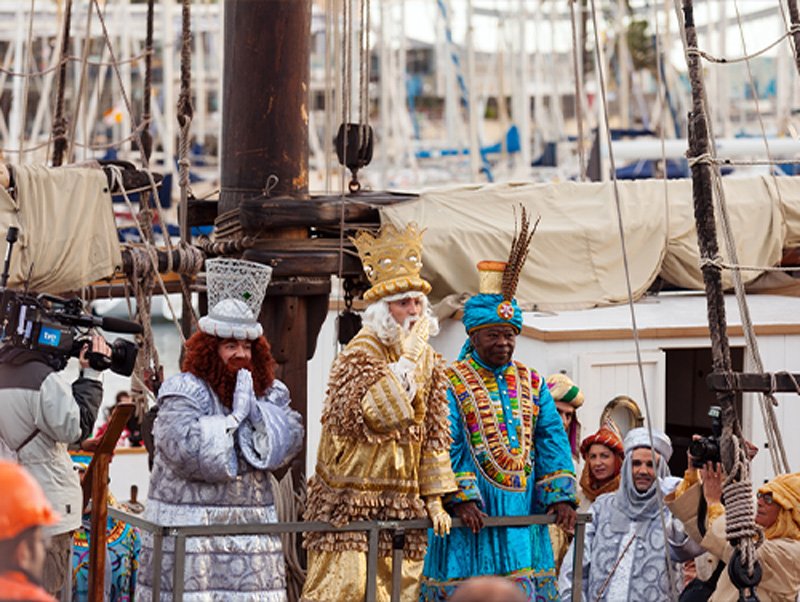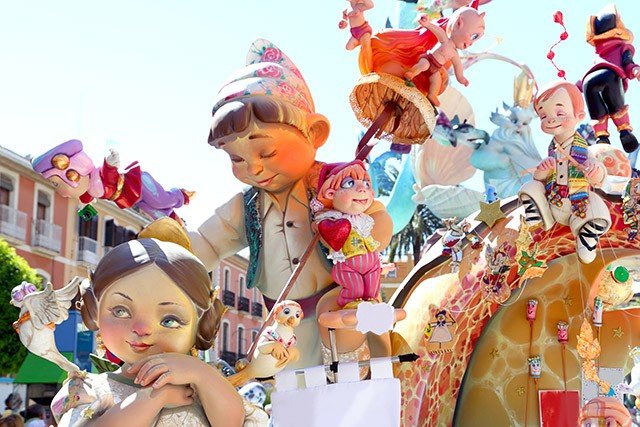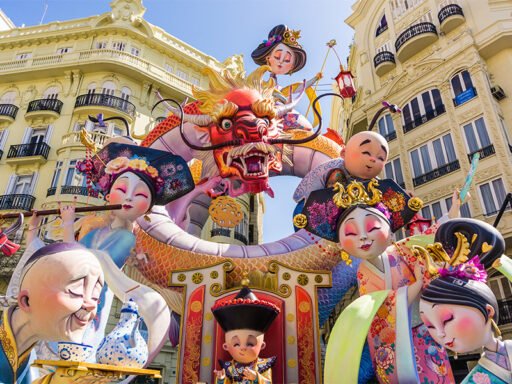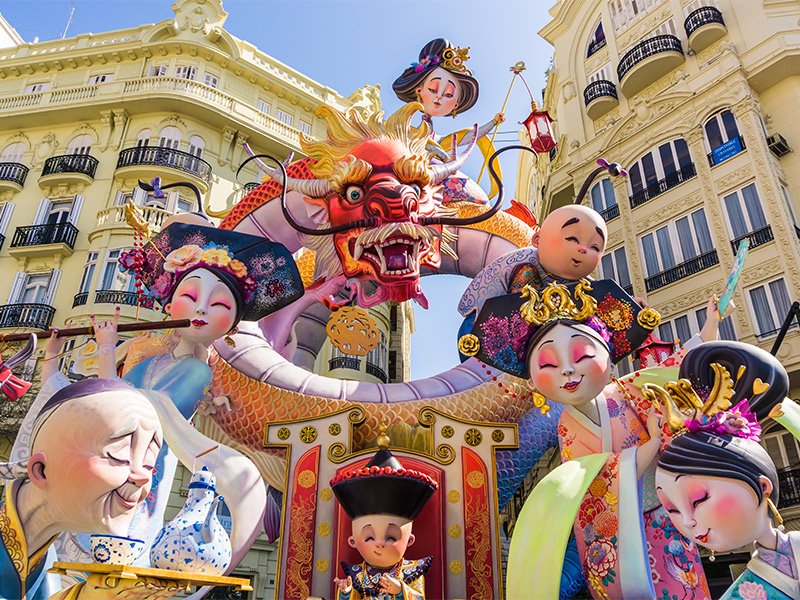Ready to dive into Spain’s colorful culture? From tomato fights to fire-jumping, Spanish festivals offer unforgettable experiences. Nexus Mag guides you through the top festivals in Spain, with tips to join the fun and capture Insta-worthy moments!
Why Experience Spanish Festivals?
Spain’s festivals are a vibrant celebration of its rich culture, blending ancient traditions with modern flair. Attracting over 10 million visitors annually, these events showcase music, dance, food, and history, from religious ceremonies to pagan rituals. Whether you’re tossing tomatoes at La Tomatina or dancing at Sonar, Spanish festivals offer a unique way to connect with locals, savor traditional dishes, and create lifelong memories. Perfect for travelers seeking cultural immersion, they’re also a goldmine for stunning social media shots.

Top Spanish Festivals to Experience
Here’s a curated list of Spain’s must-see festivals, packed with excitement and tradition:
1. La Tomatina (Buñol)
Held on the last Wednesday of August, this iconic festival sees thousands hurling tomatoes in a messy, joyous battle. Started in 1945, it now draws 20,000 participants.
Tip: Buy tickets (~€12) in advance; wear old clothes and goggles. Clean up in nearby rivers.
Fun Fact: The government supplies 150,000 kg of tomatoes.
2. Las Fallas (Valencia)
From March 15–19, Valencia hosts this fiery festival honoring Saint Joseph. Giant *ninot* sculptures (up to $75,000 each) are displayed, then burned in the climactic *La Cremà*.
Tip: Book hotels months ahead; bring earplugs for the loud *mascletà* firecracker displays (2 PM daily).
Stat: Attracts 3 million visitors yearly.
3. San Fermín (Pamplona)
Famous for the Running of the Bulls, this July 6–14 festival blends adrenaline and tradition. Expect street parties, fireworks, and bull runs.
Tip: Watch from balconies for safety; tickets ~€50. Arrive early for the opening *chupinazo*.
Fun Fact: Dates back to the 14th century.
4. Fiesta de la Mercè (Barcelona)
Honoring Barcelona’s patron saint in September, this festival features human towers, fire-running (*Correfoc*), and giant puppet parades.
Tip: Free entry; join street concerts or watch *Correfoc* from a safe distance.
Highlight: Over 500 events across the city.
5. Semana Grande (Bilbao)
From August 17–25, Bilbao’s “Big Week” celebrates Basque culture with giant puppet parades, international fireworks, and quirky contests like “ugliest face.”
Tip: Free concerts at Plaza Nueva; try Basque pintxos (~€2 each).
Stat: Draws 1 million attendees.
6. Feria de Agosto (Málaga)
Mid-August brings a week of flamenco, street markets, and dancing in Málaga. Locals in traditional attire fill the streets.
Tip: Free entry; sample tapas at market stalls (~€3–€5).
Fun Fact: Commemorates the 1487 Catholic reconquest.
7. Día de los Reyes Magos (Nationwide, Barcelona Highlight)
On January 6, the Three Kings’ Day parade in Barcelona features ship arrivals, fireworks, and gift-giving. Kids leave shoes out for presents.
Tip: Try the *Roscón de Reyes* cake; finding the hidden king brings luck!
Highlight: Barcelona’s parade is Spain’s largest.
8. Sonar Festival (Barcelona)
This June electronic music festival showcases artists like Justice and Nosaj Thing over three days.
Tip: Tickets ~€80–€200; book early for discounts.
Stat: Attracts 120,000 music fans yearly.
9. San Juan Bonfires (Nationwide, Alicante Highlight)
On June 23, Spaniards celebrate summer’s start with beach bonfires and fire-jumping to ward off evil spirits.
Tip: Free; bring a picnic to Alicante’s beaches.
Fun Fact: Roots in pagan solstice rituals.
10. Tarragona Human Towers (Tarragona)
Every two years in October, teams build human towers up to 10 stories high, a UNESCO-recognized tradition.
Tip: Free to watch; arrive early for front-row views.
Stat: Towers involve up to 500 people each.
11. Carnival (Santa Cruz de Tenerife)
February’s carnival, second only to Rio’s, features two weeks of colorful costumes, street dances, and the quirky “Burial of the Sardine.”
Tip: Free entry; join the main parade on Shrove Tuesday.
Stat: Draws 1 million revelers.
12. Tamborrada (San Sebastián)
On January 20, this 24-hour drum parade fills San Sebastián with rhythmic beats and marching bands.
Tip: Free; wear earplugs for the intense sound.
Fun Fact: Commemorates a 19th-century victory.
Focus on Las Fallas: Valencia’s Fiery Festival
When: March 15–19
Why: Las Fallas, honoring Saint Joseph, transforms Valencia into a spectacle of art, fire, and music, drawing 3 million visitors.
Highlights:
- Ninots: Giant satirical sculptures displayed citywide.
- Mascletà: Daily 2 PM firecracker battles in Plaza del Ayuntamiento.
- La Cremà: Burning of ninots on the final night.
Food to Try: Paella (€10–€15), pumpkin *buñuelos* with hot chocolate (~€3), churros.
Getting There: Fly to Valencia (from €50), take a train from Madrid (1.5 hrs, ~€30), or bus from Barcelona (4 hrs, ~€20). Use metro to avoid crowds.
Tips: Book hotels 6 months ahead; bring earplugs and a scarf for smoke. Avoid if pregnant due to noise.
Stat: Over 700 ninots are crafted annually.

Practical Tips for Spanish Festivals
Make the most of your festival experience:
- Book Early: Reserve accommodations 3–6 months in advance, especially for Las Fallas or San Fermín.
- Pack Smart: Bring earplugs, comfy shoes, and a scarf for smoky events like Las Fallas or San Juan.
- Budget: Many festivals (e.g., La Mercè, San Juan) are free; budget €10–€50 for ticketed events like Sonar or La Tomatina.
- Transport: Use trains (Renfe, ~€20–€100) or buses (ALSA, ~€10–€50) between cities; metros for festival crowds.
- Best Time: Spring (March–June) or fall (September–October) for mild weather and major events.
- Safety: Stay hydrated, use sunscreen, and keep valuables secure in crowded festivals.
Hours: Most festivals run all day; check specific schedules for parades or ticketed events.
FAQs About Spanish Festivals
Why attend Spanish festivals? They blend history, culture, and fun, offering unique experiences like tomato fights or human towers.
Which festival is best for families? Día de los Reyes Magos in Barcelona is kid-friendly with parades and gifts.
Are Spanish festivals free? Many, like La Mercè and San Juan, are free; others like La Tomatina require tickets (~€12).
What’s the most unique festival? La Tomatina’s tomato fight and Tarragona’s human towers are one-of-a-kind.
When’s the best time for festivals? March–September hosts the biggest events, with mild weather in spring and fall.
Immerse Yourself in Spanish Culture
Spanish festivals, from the fiery Las Fallas to the rhythmic Tamborrada, are a vibrant gateway to Spain’s soul. Whether you’re dancing at Sonar or dodging tomatoes at La Tomatina, these celebrations promise unforgettable adventures. Plan your trip with our guide and dive into Spain’s festive spirit. Find more travel inspiration in our Travel hub at Nexus Mag.






